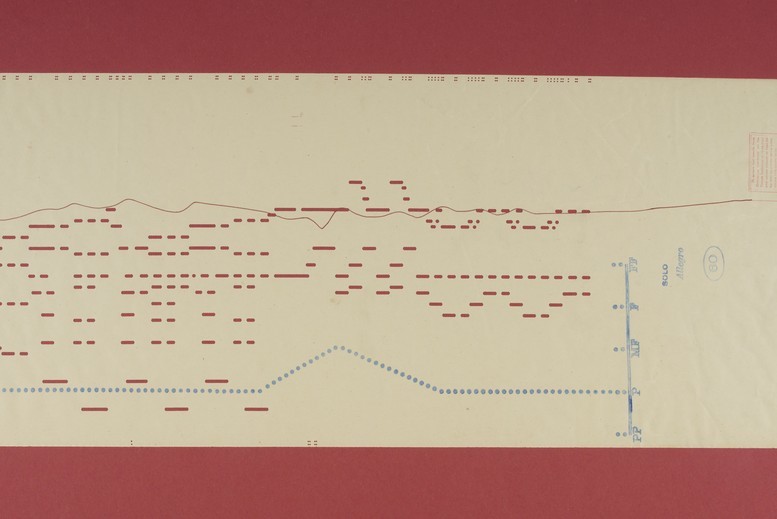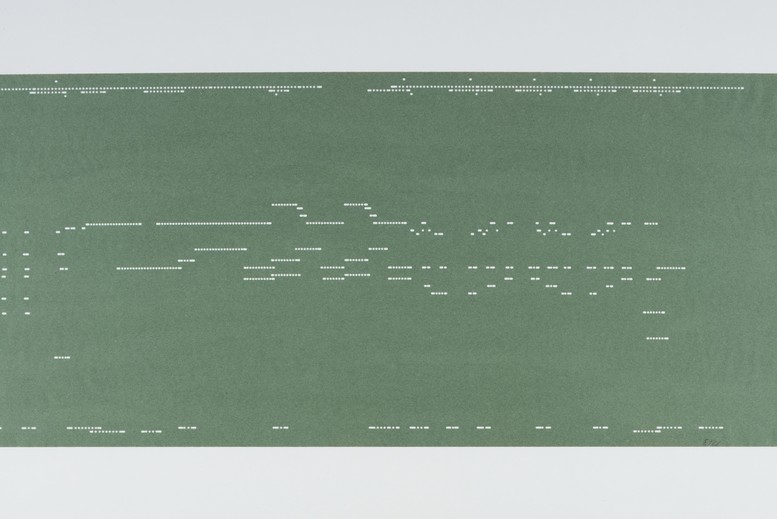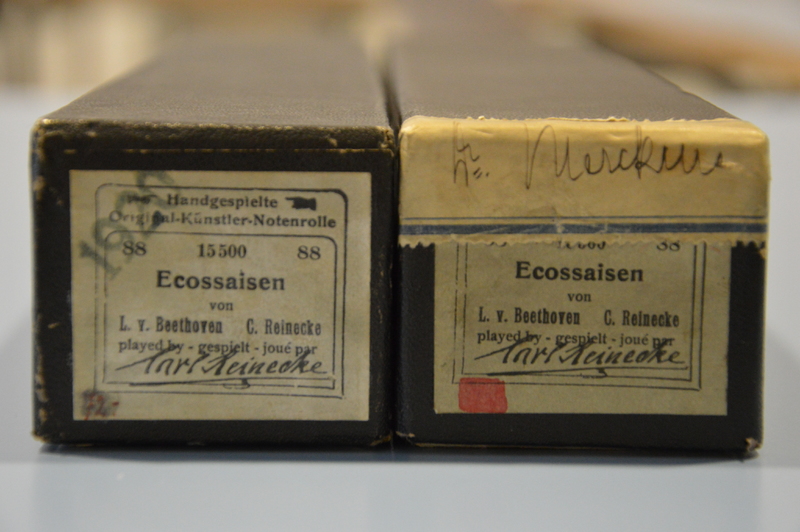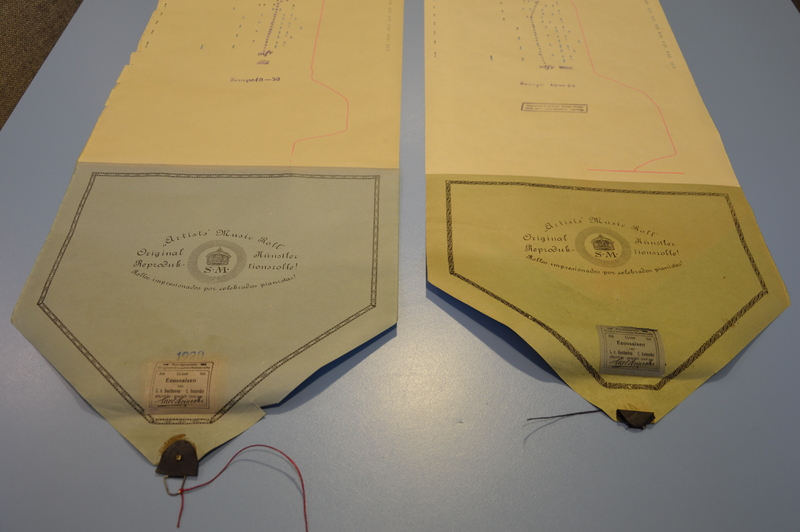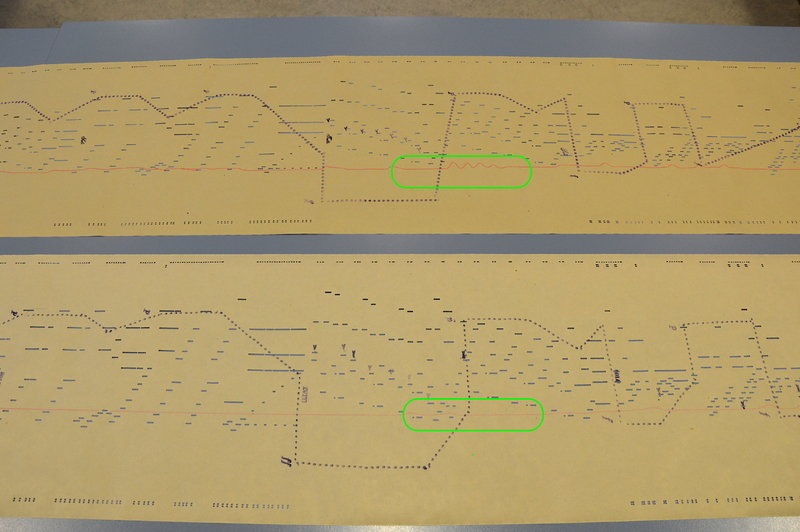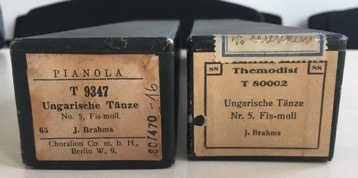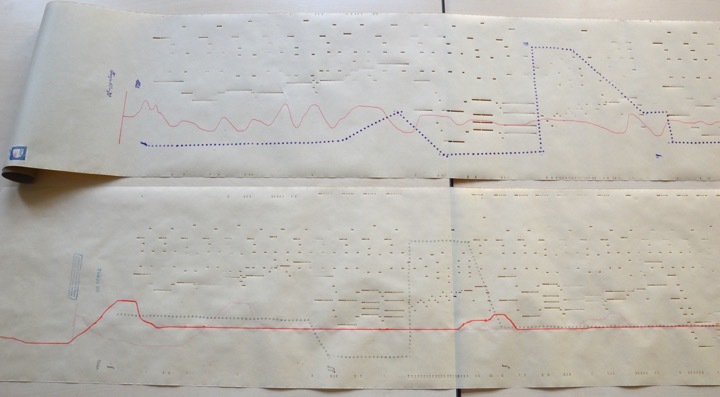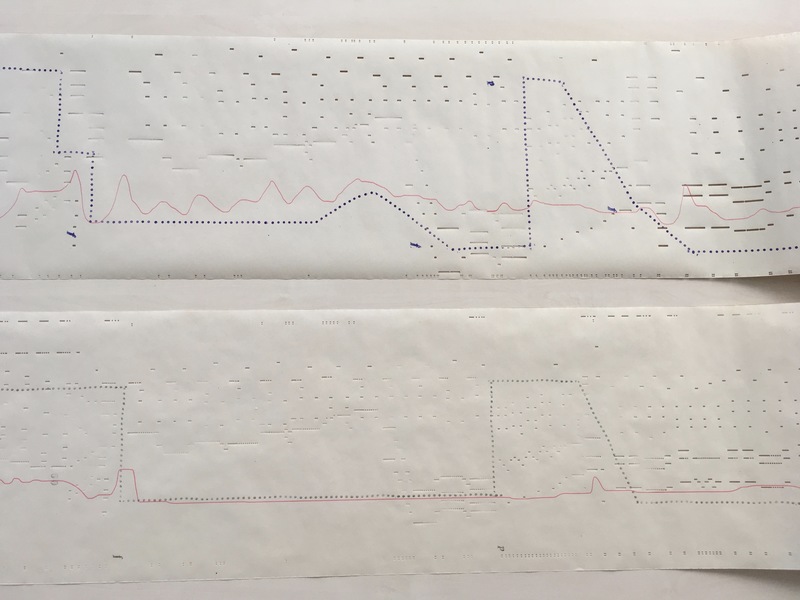Different music rolls
Comparison of music rolls for the pianola and the reproducing piano
Both rolls encode the Minuet Op. 14 by Paderewski. The Aeolian Company roll (TY 8555) is punched from the score. This means that the pitches and tone durations are recorded in the perforations exactly as defined by the composer in the score. To interpret the piece, graphic instructions for players are provided by the lines on the surface of the paper rolls.
The roll from the Welte Company, on the other hand, was recorded by a pianist – in this case by the composer himself. The perforations therefore reflect this particular interpretation, with its specific variations in tempo, tone duration and dynamics. Since the roll is intended for automated playback, no further interpretive instructions are provided.
Roll production and duplication
For the pianola, rolls were made as a copy of the musical notation; pitches and tone durations were transferred to the rolls and then perforated. While it was relatively easy to transfer the die-cuts to other rolls, it was more difficult to reproduce the graphic annotations. Various methods were tested, from stencils to a copying machine that could reproduce Metrostyle lines on up to 15 rolls. But this was still a manual process, completed by a factory worker following a template. (More pictures and information about the production of music rolls are available here.)
A certain inaccuracy was unavoidable. Sometimes you can find sections of wavy lines that only appear on individual rolls (perhaps individual factory workers were demonstrating their creativity?). Here, for example, are two nearly identical rolls from Beethoven's Ecossaises WoO 22. In the same passage in the piece, several deviations from the Metrostyle line appear in the upper roll (photograph), while in the lower roll, the Metrostyle line is straight.
Comparing the two rolls of Hungarian Dance No. 5 by J. Brahms shows how differently the Metrostyle line could be drawn. The Aeolian Company roll T9347 shows massive tempo variations in great detail, while the Metrostyle line on roll T80002 is nearly straight during the same section of the piece. When playing the latter version (see video), it is apparent that the straight line sounds quite stiff and too mechanical. The version with the wildly moving line on T9347 comes closer to a convincing musical interpretation.
Comparison of two rolls from the Aeolian Company of J. Brahms, Hungarian Dance No. 5
above: Aeolian/Choralion (No. T9347) Inv. No. 1980-470T16; below: Aeolian Company (No. T80002) Inv. No. 1986-525T70.
Citation: Stephanie Probst, ‘Playing like Paderewski, Chaminade and Co: Music education with the pianola and music rolls’, in: Materiality of Musical Instruments. A Virtual Exhibition.

